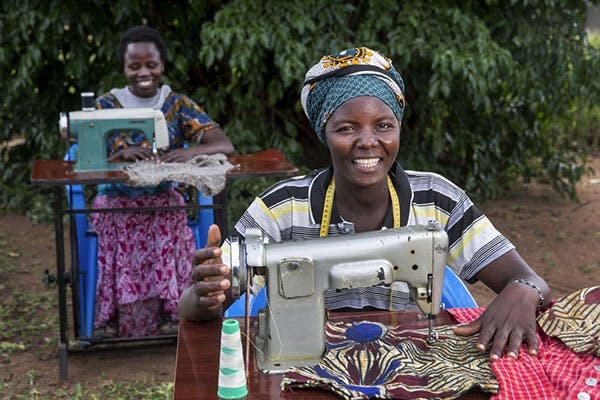What works to empower women economically, for whom, and why? How do you measure this?
Last week, we attempted to answer these questions at an event co-hosted by the ExxonMobil Foundation, the Center for Global Development (CGD), the World Bank, and Plan International on measurement and evaluation for women’s economic empowerment programs. Renowned experts spoke during two panels that included perspectives from academia as well as practitioners and funders.
At the event, the United Nations Foundation and the ExxonMobil Foundation released Measuring Women’s Economic Empowerment. This document explains what to measure to understand women’s productivity, income, and well-being across two categories of women: urban entrepreneurs and business leaders, and rural entrepreneurs and farmers. It is based on five original “think pieces” from expert research colleagues and a convening to agree on the best direct, intermediate, and final outcomes for measurement.
This work is a part of the UN Foundation’s four-year partnership with the ExxonMobil Foundation. The partnership began when we identified a gap in information on how best to empower women economically. In A Roadmap for Promoting Women’s Economic Empowerment, published in 2013, we looked at what works, for whom, and why. The Roadmap systematically reviewed the best available evidence, 136 empirical evaluations in all, to outline proven, promising, and high potential interventions to increase women’s productivity and earnings.
The measurement work responds to a clear challenge in this field which we identified while developing the Roadmap: Studies measure different outcomes, for different women, and on different timelines, making it very difficult to compare findings across studies to derive broadly applicable policy guidance.
In addition, a companion Guidelines for Measuring Women’s Economic Empowerment document describes how to measure the outcomes in the measurement document and contains a thorough overview of monitoring and evaluation, impact evaluation, and appropriate indicators.
We went from the Roadmap, to the measurement work, to the Guidelines, and together, we hope this comprehensive package will serve as a useful resource for funders and program implementers alike. We hope you will share them widely and be in touch to let us know how they have been used to help design and measure programming to support women around the world.



 View All Blog Posts
View All Blog Posts